Curated By You: Joann Liu Makes Vivian Shao Chen’s Bisque trousers in Midweight Linen
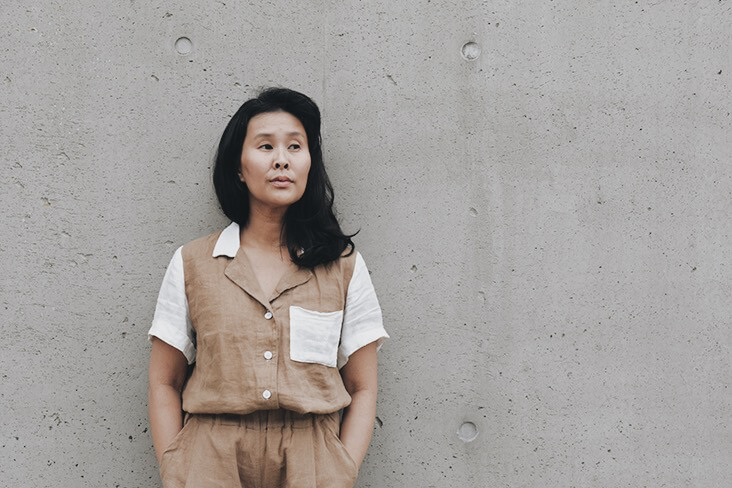
Vivian Shao Chen’s Bisque trousers and Gilbert Top by Helen’s Closet made with FS Ginger Midweight Linen
Tell us a bit about yourself and what you do.
I’m an introvert, a lifelong creative, an ex theatre student, a mama to two beautiful kids, and a school counsellor and therapist.
Why do you sew?
Sewing is my therapy. It gives me something to channel my hopes and frustrations and big feelings into, so that I can be a more present and regulated mom and partner. It feels like something that is just mine, not theirs, not anyone else’s. I started it during the pandemic and honestly would have succumbed to some rage and stuck-ness if I hadn’t found this hobby.
What do you like to listen to when you’re working (and why)?
Either nothing or podcasts! I like to be focused so usually nothing if it’s something new or challenging. I’m enjoying podcasts more than music lately because I’m on mat leave with a baby all day and I need the camaraderie of a podcast.
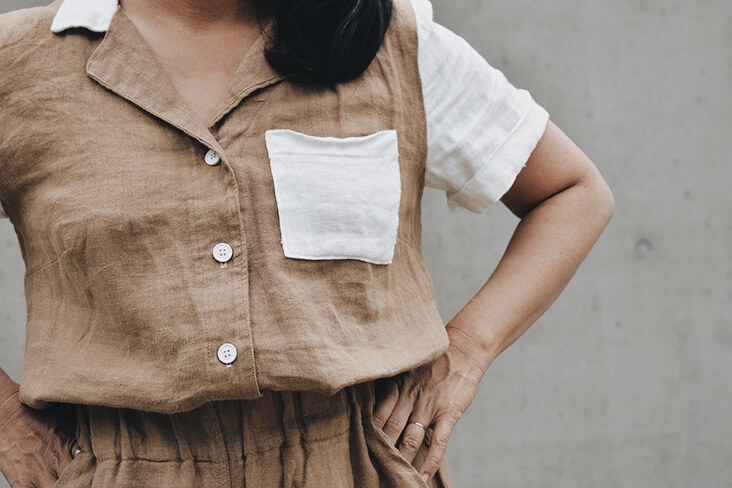
Vivian Shao Chen’s Bisque trousers and Gilbert Top by Helen’s Closet made with FS Ginger Midweight Linen
Where is home and how does it affect what you do?
I live in Vancouver, BC which means I’ve got an excellent raincoat and have access to mountains and ocean. We hunker down in the winter and ride bikes and camp and spend lots of money at the farmers market in the summer. Winter is when I do a lot of sewing, though now I’ve taken up knitting as well.
What was the first thing you ever remember making on your own? Tell us about this memory.
I don’t think this was the first, but something I made a lot when I was younger was clothes for my dolls out of paper. First, it was for my Troll dolls and then for my Sailor Moon paper dolls. I’ve clearly been obsessed with clothes for a long time! My mom used to have all her clothes fill all of our closets— so I come by it honestly.
Do you have a community of crafters/ makers around you or do you find you are on your own?
Instagram is an endless supply of inspiration. I feel so buoyed up by the sewing community. A large part of why I started sewing was because my online friends were sewing and I thought, I could do that too!
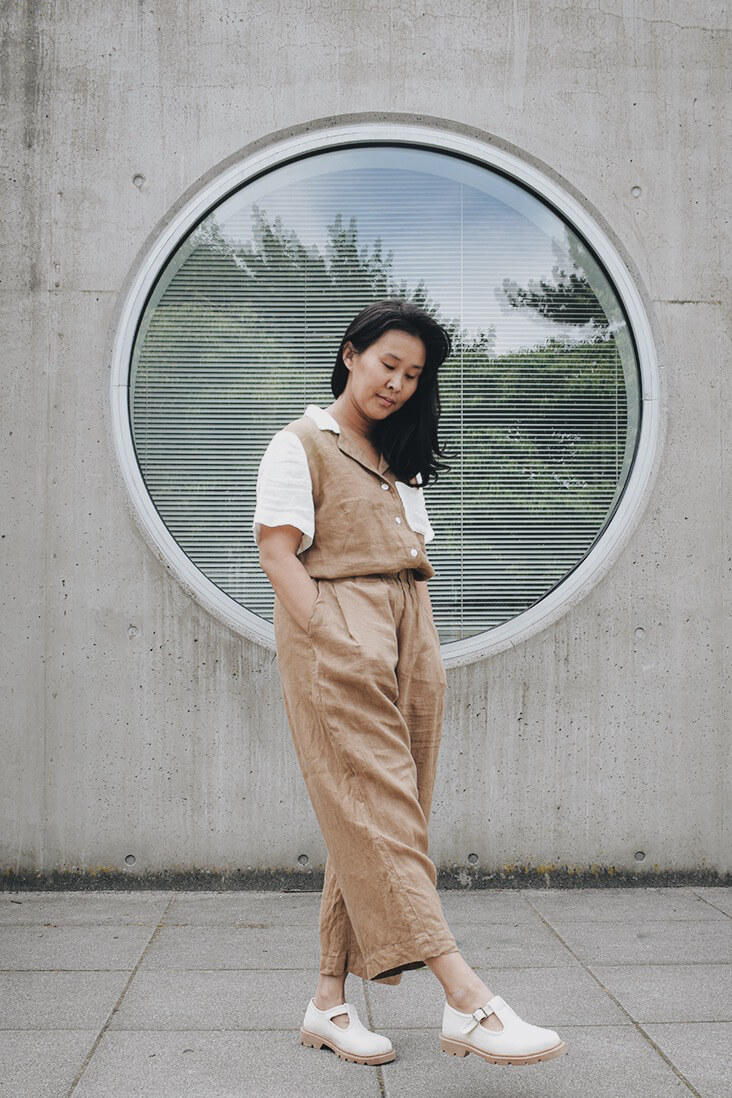
Vivian Shao Chen’s Bisque trousers and Gilbert Top by Helen’s Closet made with FS Ginger Midweight Linen
How important is it to make something with your hands?
Essential. I feel unmoored if I don’t have a project cut out. Sewing has really saved me from the existential crisis of becoming a parent— the who am I now piece. Sewing is the one thing that feels like just mine, something I don’t have to share with my crew.
How do you find the balance between motherhood and creativity?
It evens me out. Pre parenthood, I’m someone who required a lot of down time, which isn’t something I get a lot of anymore. It can be loud and messy and lots of touch —so being creative helps to regulate me. I’ve made a few things for the kids but my happiest times are making things for me!
What does success mean to you?
To me, it means living by my values and in my integrity. It means being good to those around me, spending my privilege by being intentional about which businesses I support, and divesting from those that are doing harm. It means being loved by my babies and my partner and my students and friends.
What have you chosen to make out of FS linen and why?
First, I made Vivian Shao Chen’s Bisque trousers in the wide leg view, with Ginger linen from FS. I love them. The design is so clever with the pockets blending in with the pleats. The instructions were very clear which is not something that all patterns have. It’s important to me to support and uplift BIPOC creatives and Vivian is so talented.
Then, I was hoping to use the leftover remnants of the ginger linen for a matching Gilbert Top by Helen’s Closet but I didn’t have enough, so I ventured out into color blocking for the first time and used white linen FS remnants from my Zina dress! I love love love how it turned out, and this type of creative pivot is why I love sewing so much.





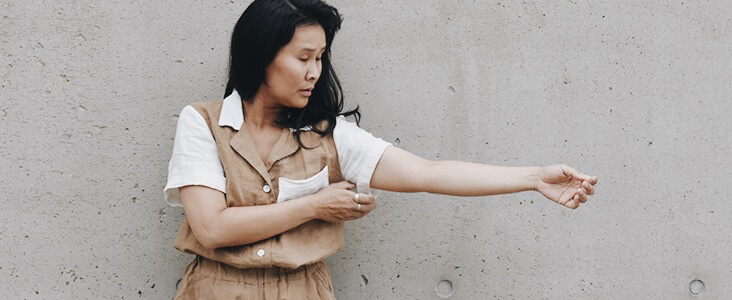
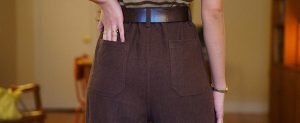

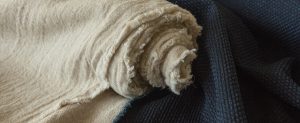
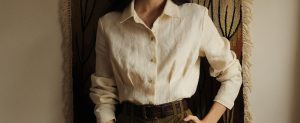




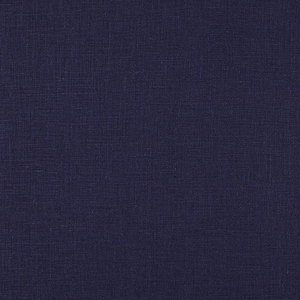





















4 Comments
Melissa Lofton
BIPOC is Black, Indigenous, and people of color.
Marilee Henneberger
I admit, I’m not up on all the little acronyms one sees on line. What does “BIPOC ” as used in this article mean? My request, please, is when editing these interesting sewing life stories, is to explain them. thanks.
Kelly Jackson
Ok. I sat with this comment for a day and am still thinking about the fact that it is 2022 and you aren’t aware of “little acronyms” which in itself is a huge conversation. I’d like to thank the Fabric-Store contributing writers for their generosity and endless inspiration. I would encourage Ms. Henneberger to assess the privilege that leads you to expect “explanations” from contributors. Obviously, you are able to read this piece online. Therefore, you are able to search for the term BIPOC and educate yourself. After our childhood, to expect others to take responsibility for our education is not a terribly grown-up or safe position. Take knowledge into your own hands. Be grateful for interesting content freely given,. Assume the greater portion of responsibility for your ignorance. And learn.
kim Covey
Recently retired I have been an engineer for 40 years managing product development of technical projects. Knowing that only 20 % of our customers are American we have to continually keep in mind the differences in the cultures of our customers in communication. It is a standard rule in business or technical communication not to assume that your written audience understands your acronym. FYI (for your information) wherever an acronym is used for the first time in your document you define it after the acronym in parentheses. This is a technique that your audience appreciates. I think it is important especially in this era of social media, that we take a few seconds to ensure that what we have written is understood without miscommunication.
VR (very respectfully), Kim